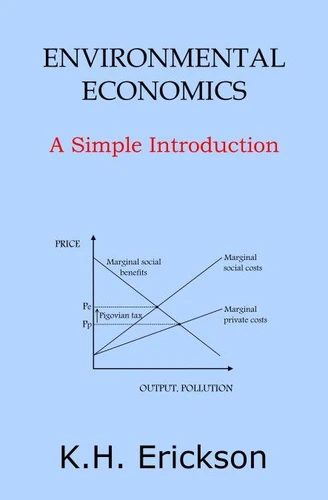Environmental Economics: A Simple Introduction. Simple Introductions, #18
Par :Formats :
Disponible dans votre compte client Decitre ou Furet du Nord dès validation de votre commande. Le format ePub est :
- Compatible avec une lecture sur My Vivlio (smartphone, tablette, ordinateur)
- Compatible avec une lecture sur liseuses Vivlio
- Pour les liseuses autres que Vivlio, vous devez utiliser le logiciel Adobe Digital Edition. Non compatible avec la lecture sur les liseuses Kindle, Remarkable et Sony
 , qui est-ce ?
, qui est-ce ?Notre partenaire de plateforme de lecture numérique où vous retrouverez l'ensemble de vos ebooks gratuitement
Pour en savoir plus sur nos ebooks, consultez notre aide en ligne ici
- FormatePub
- ISBN978-1-311-67018-2
- EAN9781311670182
- Date de parution01/06/2016
- Protection num.pas de protection
- Infos supplémentairesepub
- ÉditeurJPCA
Résumé
Environmental Economics: A Simple Introduction offers an accessible guide to the central theories and methods of environmental economics, with examples, equations, and diagrams to support the analysis. Understand the problem of environmental degradation, and why environmental externalities and market failure cause pollution to spiral out of control. Examine the effectiveness of the polluters pay principle and a range of pollution control instruments, including bargaining, Pigovian taxation, tradable emissions permits, and command and control policy.
Compare how each of the methods fare on cost efficiency, dynamic efficiency, equity, and performance under uncertainty. Explore efficient environmental management, and see how renewable natural resources can be harvested efficiently, and how a tragedy of the commons scenario can be avoided. Understand the conditions of the Hotelling rule for optimal extraction of non-renewable natural resources. Look at the stages of cost-benefit analysis and environmental policy valuation, and how the impacts of projects are valued using stated preference, revealed preference, or production function approaches.
Compare how each of the methods fare on cost efficiency, dynamic efficiency, equity, and performance under uncertainty. Explore efficient environmental management, and see how renewable natural resources can be harvested efficiently, and how a tragedy of the commons scenario can be avoided. Understand the conditions of the Hotelling rule for optimal extraction of non-renewable natural resources. Look at the stages of cost-benefit analysis and environmental policy valuation, and how the impacts of projects are valued using stated preference, revealed preference, or production function approaches.
Environmental Economics: A Simple Introduction offers an accessible guide to the central theories and methods of environmental economics, with examples, equations, and diagrams to support the analysis. Understand the problem of environmental degradation, and why environmental externalities and market failure cause pollution to spiral out of control. Examine the effectiveness of the polluters pay principle and a range of pollution control instruments, including bargaining, Pigovian taxation, tradable emissions permits, and command and control policy.
Compare how each of the methods fare on cost efficiency, dynamic efficiency, equity, and performance under uncertainty. Explore efficient environmental management, and see how renewable natural resources can be harvested efficiently, and how a tragedy of the commons scenario can be avoided. Understand the conditions of the Hotelling rule for optimal extraction of non-renewable natural resources. Look at the stages of cost-benefit analysis and environmental policy valuation, and how the impacts of projects are valued using stated preference, revealed preference, or production function approaches.
Compare how each of the methods fare on cost efficiency, dynamic efficiency, equity, and performance under uncertainty. Explore efficient environmental management, and see how renewable natural resources can be harvested efficiently, and how a tragedy of the commons scenario can be avoided. Understand the conditions of the Hotelling rule for optimal extraction of non-renewable natural resources. Look at the stages of cost-benefit analysis and environmental policy valuation, and how the impacts of projects are valued using stated preference, revealed preference, or production function approaches.






















